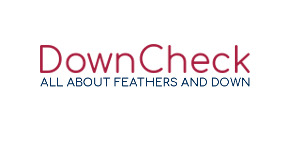Which are the most important differences between the old RAL 092 A2-regulations, that are not in force any more, and the new standard DIN EN 12934?
The most important and the most obvious difference is related to the information on the filling’s massshares of down and feathers which are specified in per cent. The percentage of down plays an important role in this: the higher the down content, the higher the filling power and the thermal retention of the product with – at the same time – a lower weight.
The down and feather shares are not indicated anymore by a narrative text, at least not without the obligatory composition labelling expressed in percentages. Instead, the filling’s content will be displayed in the form of percentages of weight.
Thus, the half-down according to the old German RAL will now be marked as 85 % feathers, 15 % down.
Three-quarter down will be labelled 70 % feathers, 30 % down.
What else is new: the term “new class I“ replaces the term “feathers which have not previously been used“ (in Germany the term “original” had been used so far) and the fillings have been grouped in different classes.










